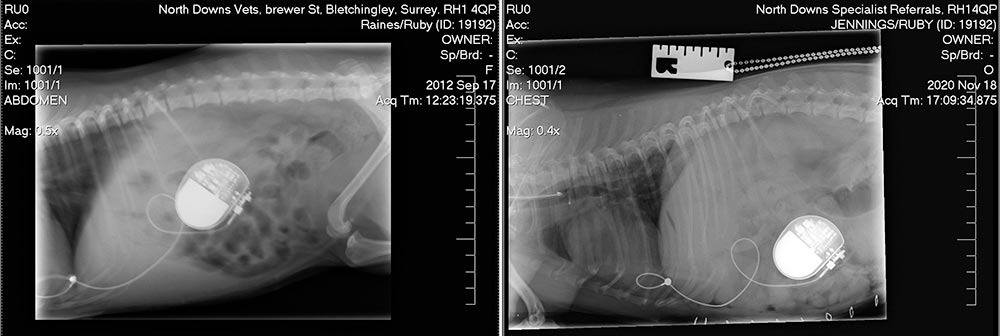11 Feb 2021
Yorkshire terrier-West Highland white terrier cross back at specialist practice for replacement device eight years after first one fitted.

Vets have carried out a rare, life-saving second pacemaker operation on a dog.

The team at North Downs Specialist Referrals (NDSR) in Surrey fitted Yorkshire terrier-West Highland white terrier cross Ruby with a pacemaker eight years ago, when she was diagnosed with a heart rate around 40bpm.
Ruby was three-and-a-half years old when she was first fitted with the pulse generator, but she was back at NDSR when the specialist team determined the battery life on the device was running critically low and a new one was needed.
NDSR’s specialist in cardiology Joao Loureiro said: “We first met Ruby when she was just three-and-a-half years old to investigate her lethargy and slow heart rate. We discovered she had a block to the electrical conduction system of her heart, which resulted in no electrical impulses reaching the pumping chambers.
“This meant she had an incredibly low heart rate of just 40 to 50 beats per minute, instead of more than 120, which we would expect.”
Mr Loureiro added: “She needed a pacemaker fitted, which, of course, can be programmed to meet individual requirements. The pacemaker lead is usually placed on the inside of the heart via a large vein in the neck and the pulse generator is implanted under the skin of the neck.
“However, weighing only 5kg, Ruby was so small the pulse generator had to be implanted in her abdomen, with the wire sutured to the outside of the heart.”

Ruby’s small size meant the procedure to attach Ruby’s heart was a highly technically demanding procedure that also required the skills of NDSR’s specialist in small animal surgery Benito de la Puerta.
Mr Loureiro added: “She made a great recovery and did very well for the ensuing eight years, with no restrictions to her activity or quality of life. Ruby had yearly evaluations of her pacemaker and this was found to be working extremely well, but recently we discovered the battery had reached a critically low level.
“This was a very serious situation because if the battery became fully depleted, her heart would stop pumping completely, so surgery was again necessary. It’s an unusual procedure in dogs because of their shorter lifespan and the fact that pacemakers are normally fitted in older animals, which don’t then live long enough to see the battery deplete.”